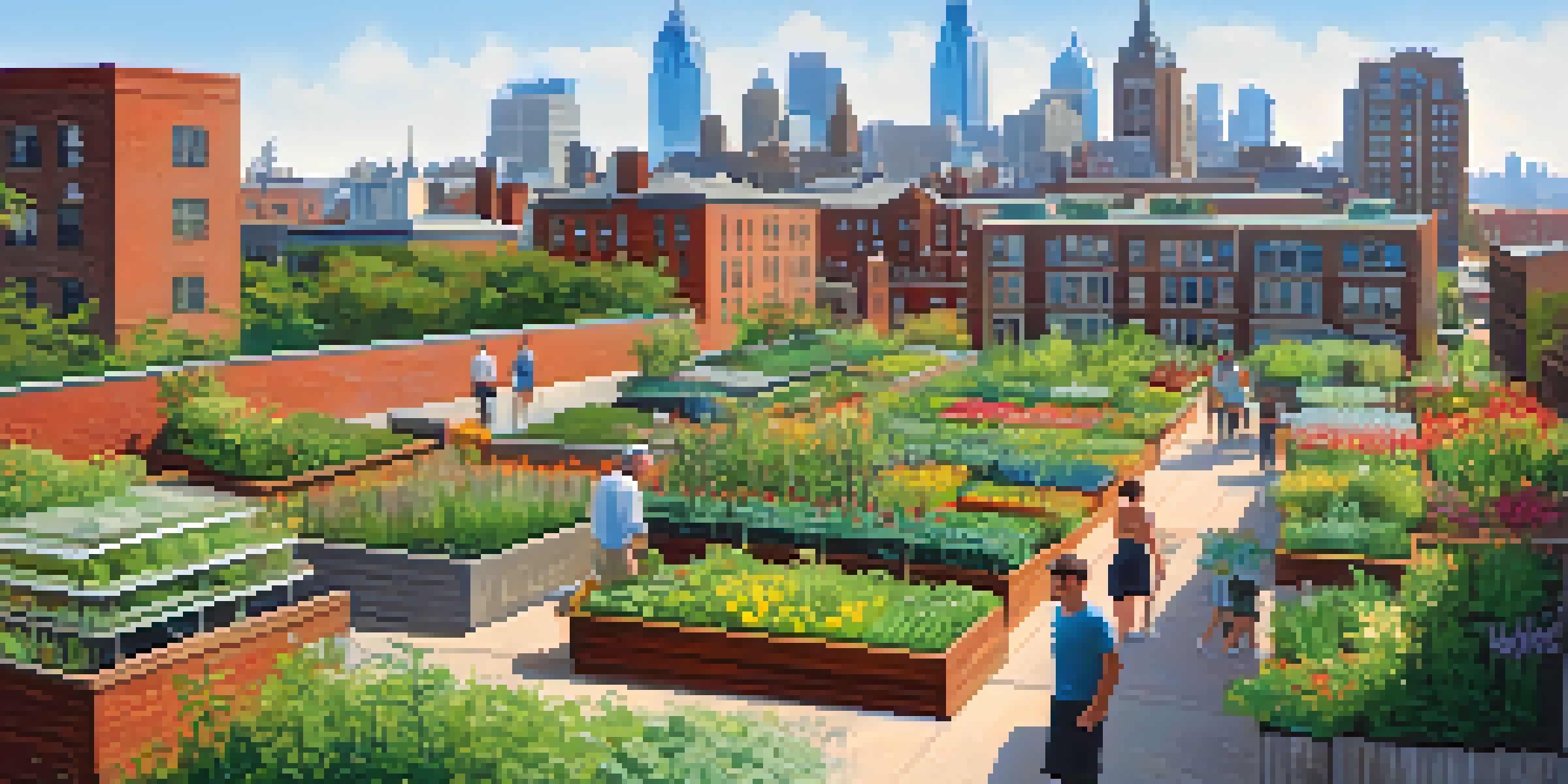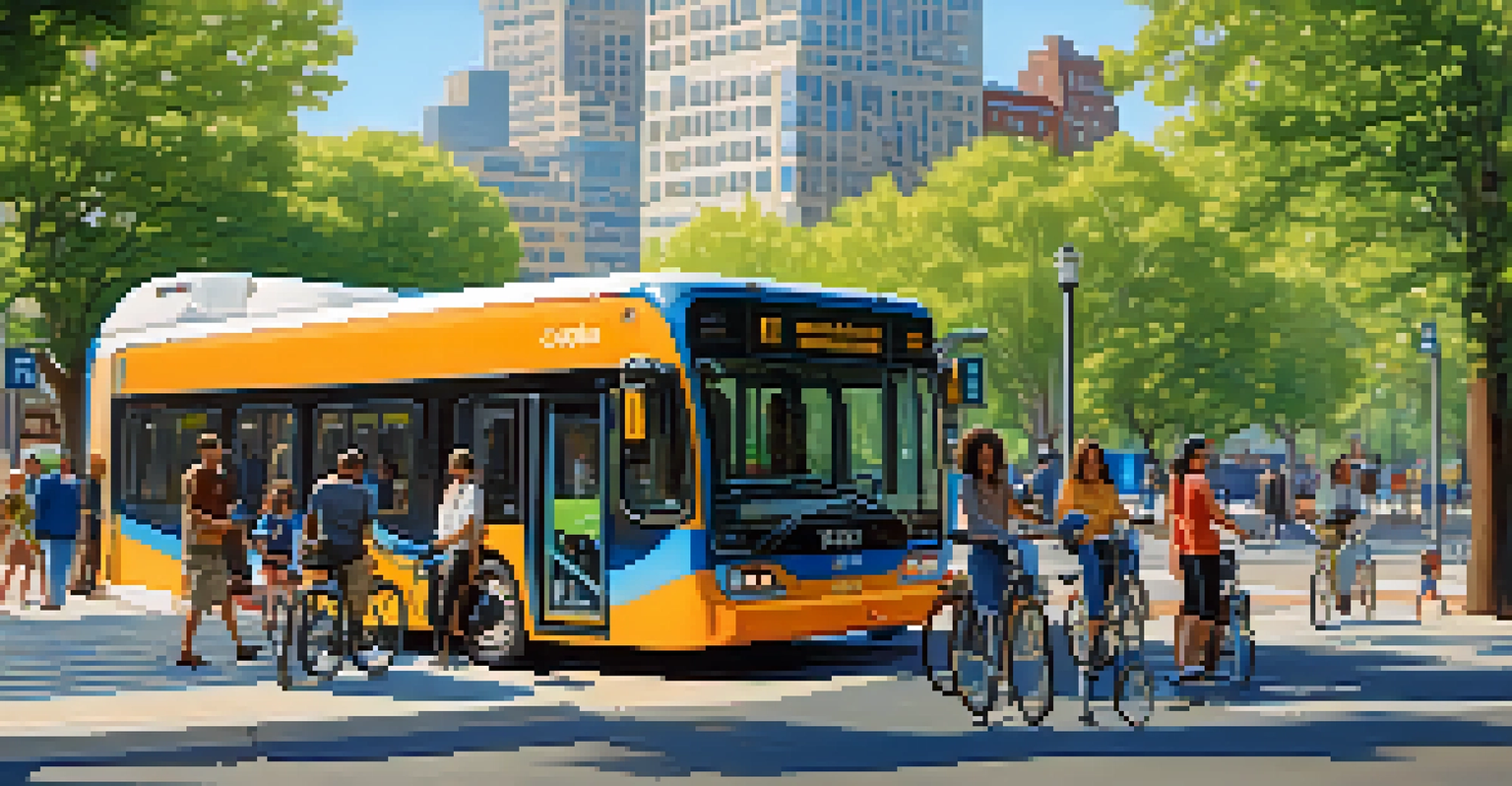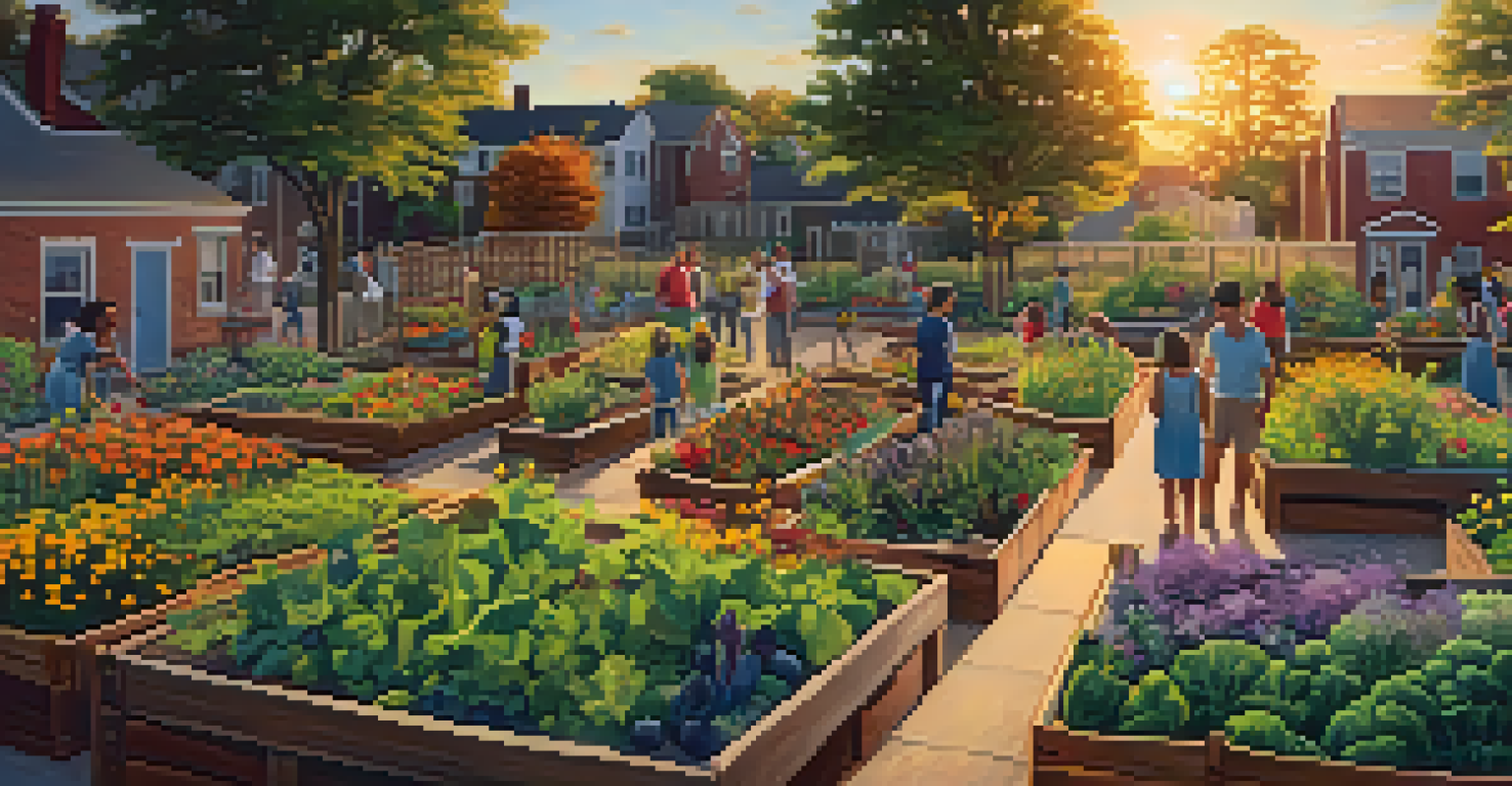Sustainable Urban Development Projects in Philadelphia

Introduction to Sustainable Urban Development in Philadelphia
Sustainable urban development is a crucial aspect of modern city planning, especially in bustling cities like Philadelphia. It focuses on creating urban spaces that meet the needs of the present without compromising future generations. In Philadelphia, a range of projects is being implemented to enhance sustainability, addressing both environmental concerns and social equity.
Sustainability is no longer about doing less harm. It's about doing more good.
These projects not only aim to reduce carbon footprints but also enhance the quality of life for residents. From green roofs to energy-efficient buildings, Philadelphia is making strides in becoming a more sustainable city. This transformation is not just about the environment; it’s also about creating a vibrant, livable space for its diverse communities.
As we dive into the various initiatives, we’ll see how these projects are reshaping the urban landscape and what they mean for the future of Philadelphia. Each project contributes uniquely to the city’s sustainability goals, providing innovative solutions to urban challenges.
Green Roofs: Nature on Top of Buildings
One of the most exciting trends in sustainable urban development is the installation of green roofs. These living roofs provide numerous benefits, including improved air quality and reduced heat island effects. In Philadelphia, several buildings have embraced this trend, showcasing the city’s commitment to sustainability.

Green roofs not only support biodiversity by providing habitats for birds and insects but also help with stormwater management. By absorbing rainwater, they reduce the burden on the city’s drainage systems, mitigating flooding risks. This multifunctional approach highlights how urban spaces can work with nature rather than against it.
Green Roofs Enhance Urban Sustainability
Green roofs in Philadelphia improve air quality, manage stormwater, and add aesthetic value to buildings.
Moreover, green roofs can enhance the aesthetic appeal of buildings, creating serene spaces for residents and visitors. As more projects emerge, they contribute to a greener skyline, reminding us that nature can coexist harmoniously with urban life.
Community Gardens: Cultivating Green Spaces
Community gardens are blossoming throughout Philadelphia, offering residents the chance to engage with nature and each other. These gardens not only provide fresh produce but also foster a sense of community and belonging. They transform vacant lots into vibrant spaces where neighbors can come together, share resources, and learn sustainable gardening practices.
The greatest threat to our planet is the belief that someone else will save it.
By promoting urban agriculture, these gardens address food insecurity, particularly in underserved neighborhoods. They empower individuals to grow their own food, reducing reliance on processed foods and encouraging healthier eating habits. The act of gardening can also be therapeutic, providing mental health benefits to those involved.
Additionally, community gardens play a vital role in educating the next generation about sustainability. Schools often partner with local gardens to teach students about the importance of plant life, ecosystem balance, and environmental stewardship, planting the seeds for a more sustainable future.
Energy-Efficient Buildings: The Future of Construction
Energy-efficient buildings are at the forefront of Philadelphia’s sustainable urban development efforts. These structures utilize advanced technologies and materials to minimize energy consumption, significantly lowering utility bills for occupants. By implementing features like solar panels and energy-efficient windows, Philadelphia is setting a benchmark for sustainable construction.
The city encourages developers to adopt green building standards, such as LEED (Leadership in Energy and Environmental Design). This not only helps reduce greenhouse gas emissions but also promotes healthier indoor environments. As more buildings are constructed or renovated with sustainability in mind, they become integral components of the city’s climate action plan.
Community Gardens Foster Connection
Community gardens provide fresh produce, promote mental health, and educate residents about sustainable practices.
Moreover, energy-efficient buildings contribute to local economies by creating jobs in the green construction sector. This shift not only addresses environmental concerns but also boosts economic resilience, making Philadelphia a model for other cities looking to embrace sustainable practices.
Public Transit Innovations: Moving Towards Sustainability
Public transit is a cornerstone of sustainable urban development, and Philadelphia is enhancing its systems to promote greener commuting options. The city is investing in electric buses and expanding bike-sharing programs, making it easier for residents to choose eco-friendly transportation. These initiatives aim to reduce traffic congestion and lower emissions from traditional vehicles.
By improving public transit accessibility, Philadelphia can encourage more residents to leave their cars behind. This shift not only decreases air pollution but also fosters a more connected community. As more people opt for public transportation, the city benefits from reduced road maintenance costs and improved overall public health.
Additionally, integrating transit with walkable neighborhoods creates a more holistic approach to urban planning. By designing city spaces that prioritize pedestrians and cyclists, Philadelphia is paving the way for a sustainable future, where getting around doesn’t have to harm the environment.
Stormwater Management: Embracing Nature’s Solutions
Effective stormwater management is critical in urban environments, and Philadelphia is leading the way with innovative solutions. The city has implemented green infrastructure projects, such as bioswales and permeable pavements, to manage runoff and reduce flooding. These natural systems allow rainwater to infiltrate the ground, replenishing local aquifers and minimizing water pollution.
By harnessing nature’s capabilities, Philadelphia is not only addressing immediate flooding concerns but also improving water quality in local rivers and streams. These projects demonstrate how urban areas can integrate natural processes into their infrastructure, creating more resilient cities.
Energy-Efficient Buildings Lead Change
Energy-efficient buildings in Philadelphia reduce utility costs and greenhouse gas emissions while boosting the local economy.
Furthermore, community engagement plays a crucial role in these initiatives. Residents are often involved in the design and maintenance of green infrastructure, fostering a sense of ownership and responsibility towards their environment. This collaborative approach strengthens community ties while promoting sustainable practices.
The Role of Technology in Urban Sustainability
Technology is revolutionizing sustainable urban development in Philadelphia. From smart sensors that monitor air quality to apps that help residents find the nearest recycling center, technological innovations are making it easier for individuals to engage in sustainable practices. These tools not only raise awareness but also empower citizens to take action.
Moreover, data analytics plays a vital role in optimizing city operations. By analyzing traffic patterns and energy usage, the city can make informed decisions that enhance sustainability efforts. This data-driven approach allows for more efficient resource allocation, minimizing waste and maximizing impact.

As technology continues to evolve, Philadelphia is well-positioned to leverage these advancements in its sustainability initiatives. By integrating smart solutions into urban planning, the city can create a more efficient and environmentally friendly urban ecosystem.
Conclusion: A Sustainable Future for Philadelphia
The sustainable urban development projects underway in Philadelphia represent a significant step towards a greener future. Each initiative showcases the city’s commitment to environmental stewardship, community engagement, and innovative solutions. From green roofs to energy-efficient buildings, these projects are transforming the urban landscape.
However, sustainability is not a destination but a continuous journey. It requires collaboration among city officials, developers, and residents to create lasting change. By fostering a culture of sustainability, Philadelphia can inspire other cities to follow suit, demonstrating that urban living can coexist with environmental responsibility.
As we look ahead, it is clear that the choices made today will shape the city’s tomorrow. By investing in sustainable practices, Philadelphia is not just improving the lives of its residents but also setting an example for future generations.